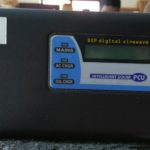SEMILON 9W LED BULB
December 16, 2016Automatic or LDR Street Lights
February 2, 2017
Solar inverters are the heart of a solar plant. It is very much important to know the basic features and specifications of a Solar inverter.
Inverter portion of both solar an normal inverters are same. In solar inverters the additional part is solar charge controller and associated switching circuits. Apart from the battery terminals solar inverters have two additional terminals to connect solar panels of suitable rating. Whenever sufficient sunlight is available, the output from solar panel will be utilized for charging the battery, which can brings down your electricity bill.
When sufficient output available from Solar panels to charge the battery, it will be sensed by the intelligent automatic transfer switch and routed to battery. In this time mains supply will not be utilized for charging purpose. Whenever the solar output falls below the rated voltage, mains input from inverter will be used for battery charging.
Grid tied inverters are coupled to main utility grid. Here the DC output from solar panel is converted to AC and coupled with the grid through a special type of energy meter known as Netmeter. Unlike normal energy meters, net meters are bi-directional. Here the solar energy is used as a supplement to the grid power. Grid tied inverters convert the DC power input from Solar panels to AC and feed the same to utility grid through Netmeter. If your solar panel is generating more energy than your domestic requirement, the excess energy will be credited to the grid, means you can sell the energy to the utility grid.
Here grid tied inverters can not be used as a backup device as in the case of off line inverters. When mains grid power fails, as a safety measure inverter will not generate electricity. A circuit senses the power failure and cut off the inverter from main grid . This avoid risk to the line workers. In India you can’t use these type of inverters because the grid system is not yet modified for this.
Capacity: Capacity of the inverter is the maximum load that you can be connected with the inverter. For example if the capacity of a Solar inverter is 1 Kilowatt, you can connect maximum 1 KW load to that inverter. 1 Kilowatt is considered sufficient for average home usage. If money permits, you can go upto 2KW also, anything beyond that for home usage won’t be economical.
Output: Don’t compromise on the output waveform of the inverters. It must be Sine wave. Fortunately most of the leading solar inverter firms are supplying sine wave inverters only in solar segment.
Other features: Unlike normal inverters, solar inverters have many unique features to make it more energy efficient and to tap the maximum benefits from the solar panels.
Maximum Solar energy benefit: Solar inverters charge battery bank with the power output from Solar panels during daytime. A typical 1 Kilowatt Home solar power plant takes five to six hours for charging the battery. If you are not completely drain out the battery during night time, it will take much less time to charge the battery full during the next day. Once the battery gets fully charged in one or two hours, in normal solar inverters rest of the useful solar energy will be wasted. In some solar inverters once the battery is fully charged, the power conditioning circuitry automatically cut the mains supply and Solar Panel battery combination will power the devices through inverter. Here during daytime effective and full utilization of solar power can be achieved.
Metering: Apart from the battery charging status, power on/off, battery low, mains on/off indications, modern solar inverters are incorporated with energy meters which logs the energy usage from solar panels/mains, net daily/monthly energy usage etc.
Programmable Controls: Modern solar inverters facilitates programmable energy control system. Here you can effectively decide what energy should be used when.
